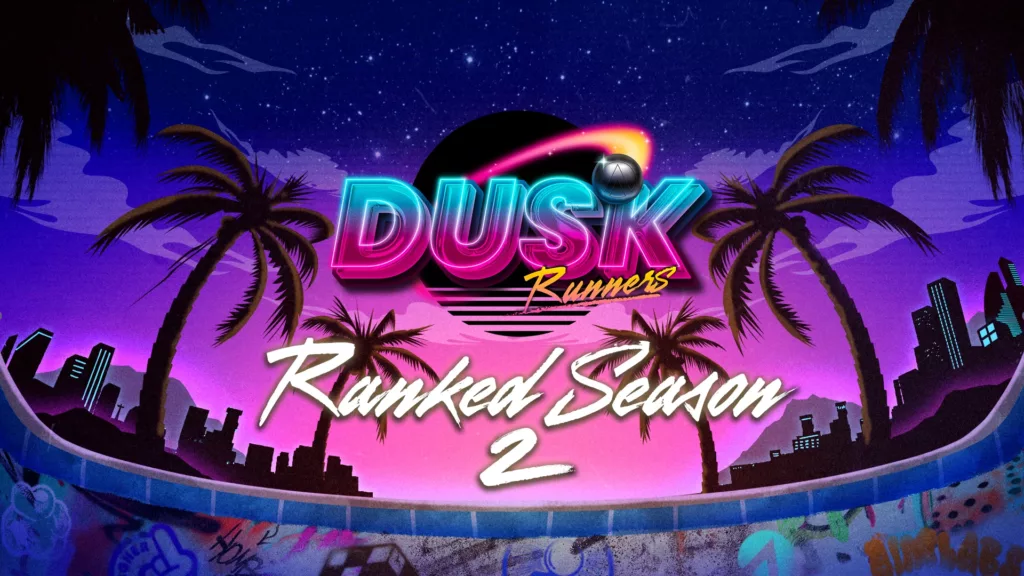
Our Retrospective on the Results of the Inaugural Aimlabs Ranked Season
With ranked Season 2: Dusk Runners well underway, we wanted to take the time to recap the results of our inaugural ranked season, which culminated in Dallas with the Red Bull Ready Check, and share some of our findings and takeaways. We’ll review the ranked distributions, share insights about what that means, and provide context about how that has informed our design for the second season and beyond.
Season 1’s Rank Distribution

First of all, we’re thrilled with the overall shape of the distribution graph. We’re seeing that the players dedicated to playing the ranked mode are not being punished, and the players who want to put the time and effort in are being rewarded for their work. The graph also peaks at about where we had estimated, with the average player landing around the Ruby ranking.
There are some anomalies on the graph, but they have a simple answer. For example, you’ll notice that Platinum 2 and Emerald 3 are disproportionately low compared to the other levels in the Platinum and Emerald rankings. This is a result of the amount of points required for specific ranks. To best understand this, look at this graphic, which explains how many points are required for each ranking.

Considering that information, we can see that the difference between Platinum 2 and Platinum 1 is just 10 ranking points, which can be achieved by achieving or raising the score on a ranked task by 1,000. Similarly, the difference between Emerald 3 and Emerald 2 is another 10 ranking points.
On the top end of the graph, we see that most players who achieve the Grandmaster rank can push to Grandmaster 1. Again, this results from the amount of points required for each ranking level, with the difference between Grandmaster 4 and 1 being just 30 ranking points. Since most players in the Grandmaster skill level are likely to be grinding tasks to push their leaderboard ranking, they’re likely to squeeze another 3,000 out of their scores, which would be required to earn those 30 ranking points.
How Has This Impacted Season 2: Dusk Runners?

In the first ranked season, we saw a slightly higher number of players landing in Emerald and Diamond than we expected, as we had expected those ranks to more closely mirror the curve seen in Gold and Platinum. Heading into Season 2: Dusk Runners, we felt the above-average players could use more of a challenge, and we designed the tasks around accomplishing that.
You’ll notice that the tasks from the current season feature more challenging modifiers, such as the targets gradually shrinking as your score increases on Soarclick and Angelclick. We want the task’s difficulty to increase to meet the player’s skill level, so if a player is already maintaining a slow score curve on one of those tasks, the difficulty curve will gradually increase at a similar pace.
Other examples include Sideclick’s timer or how the targets in tracking tasks shrink and become more evasive. We wanted to make sure that these tasks were accessible to players at every level, and while some tasks may feel more challenging than others, that will help provide players with insights about areas they need to improve.
Balancing for higher-skilled players can be difficult, as tasks that would challenge them would wildly overmatch beginners. Instead, we incentivize that top-tier player base with the emphasis we’ve put on leaderboard placements throughout the ranked seasons.
Ranked Season 3 and Beyond
Each season, we look back at the data gathered from the players, the rankings, and the results. We’ll continue to use that data to inform and inspire the design of each upcoming season and other partnership initiatives, such as the Red Bull Campus Clutch, to make sure that we’re maintaining that balance between the challenge level and accessibility of the tasks to make sure that ranked seasons are engaging for everyone.
We hear players’ voices and feedback from each skill group, and we know that players in the Bronze and Silver tiers still find the tasks overwhelming. We believe this feeling is compounded by requiring 250 rank points to reach Bronze 4, making it the largest amount of rank points needed to move up to the next rank tier. We’re looking at this and will explore all options available to ensure ranked seasons are just as accessible for these players as well.
